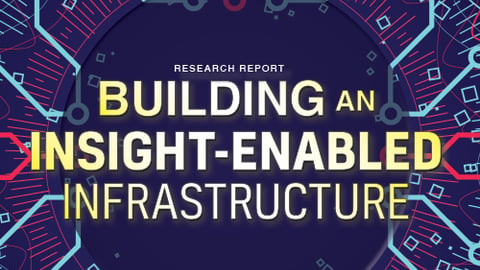Overcoming Data Roadblocks
This blog post contains portions of an interview between David Cantu, HotSchedules Co-Founder and Chief Customer Officer and HT's editor, Dorothy Creamer, which was first published in the industry report Building an Insight-Enabled Infrastructure. The interview explores the answer to a primary concern for restaurant operators and technology professionals — how can restaurants and hospitality businesses start making their data work for them?
Improving data and analytics is a top strategic goal for restaurant technology. What are the main technology challenges brands face today? How are they preventing restaurants from improving their data and analytics strategy?
DAVID CANTU: We hear it time and time again from our customers — the number one technology challenge restaurants deal with today is the complexity of their technology stacks — the resulting fragmentation of processes as well as the decentralization of data, reporting and insights.
What are the key stumbling blocks that complex, disparate technology stacks pose to operations and how can restaurants overcome them?
CANTU: Restaurants are managing a staggering number of systems. Some IT teams are managing and supporting upwards of 30 different systems — from loyalty and marketing, to multiple point of sale systems, and of course, their back of house solutions. It’s unsustainable at the pace and scale brands need to operate and grow against our industry’s headwinds.
Three of the major stumbling blocks we see include:
- The decentralization of data, insights and reporting leads to a lot of inefficiency, frustration and frankly, finger-pointing.
- IT leaders are charged with keeping up with the latest technology trends while optimizing, if not reducing, the overall spend on new solutions and maintenance of legacy systems.
- As legacy systems are replaced, there’s pressure to increase adoption and usage, while trying to quickly show ROI and drive results.
What can restaurants and their technology partners do to solve for this?
CANTU: Restaurants are in need of a central source of truth. But a great business
intelligence and reporting tool isn’t enough. The data has to drive decision-making in an actionable way. Ultimately, it has to be interwoven into the daily store workflow and back-of-house operations. Restaurants and technology partners need to work together to effectively integrate data so that it can be centrally managed and leveraged by corporate departments to develop strategies and influence profitable and productive decision-making at the store level.
At the same time, we have to remember the unique qualities that make a restaurant successful in individual markets. The technology should complement a store’s operations not over-complicate it. Too many systems are rolled out and then go unused at the store-level. We have to enable and empower managers with unified systems that take into account the unique characteristics of the market while also holding them accountable to corporate standards and larger business outcomes. The technology has to be simplified, user-friendly, mobile, and adaptable.
Finally, leaders need to work with a trusted technology partner who builds and continually invests in the development of software their teams actually want to use. What we’re hearing from customers is that it’s too expensive and resource-constraining on the organization to invest in multiple vendors — so restaurants have to seek out a partner who can simplify operations as companies “switch out the engine” today. It’s also important to identify a partner that facilitates discussion and a feedback-loop from leaders across all restaurant sizes and segments to solve for the demands of tomorrow. As an industry, we’re only going to get better when we can collaborate.
David Cantu is co-founder and chief customer officer at HotSchedules, provider of Clarifi™, the first cloud-based intelligent operating platform for restaurants. David’s more than 17 years of restaurant operations experience have contributed to HotSchedules' product development and innovative solutions to improve restaurant operations’ scheduling efficiencies, labor management and increased employee engagement.








